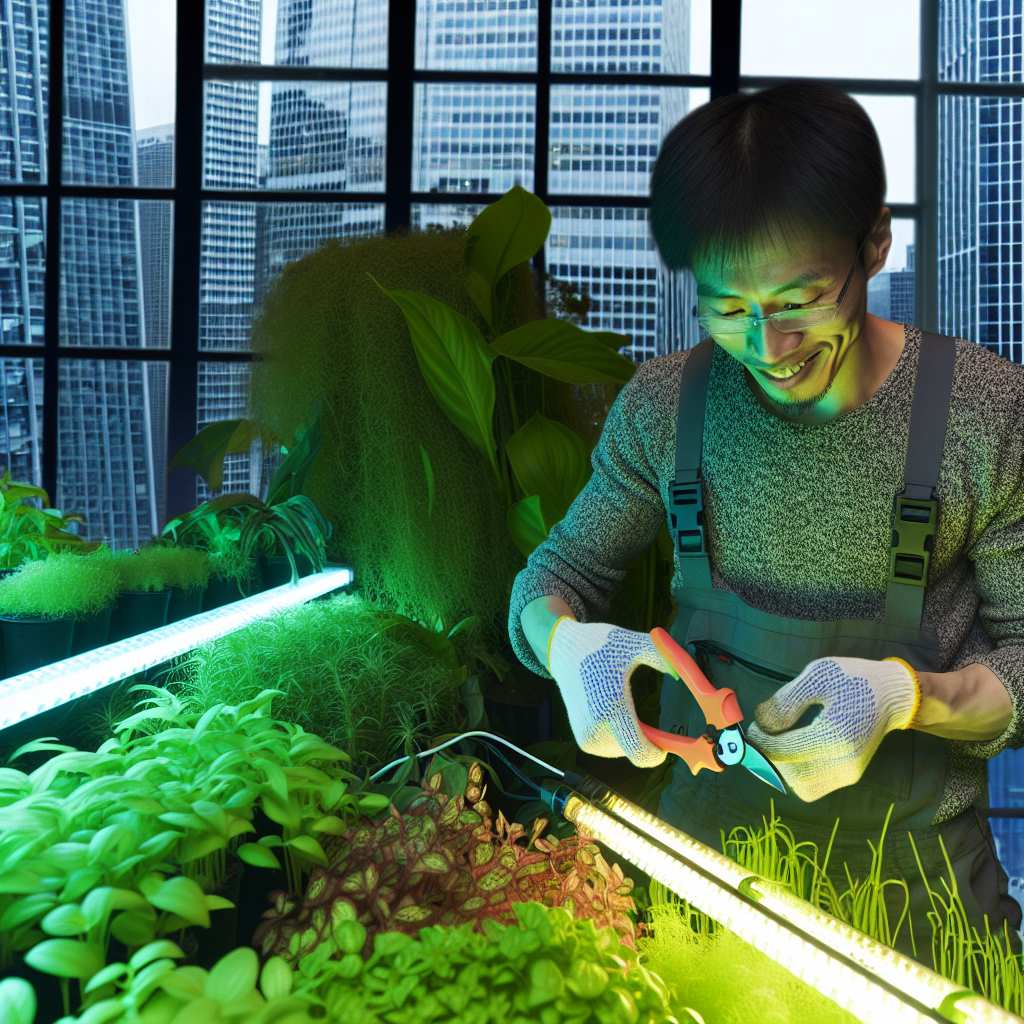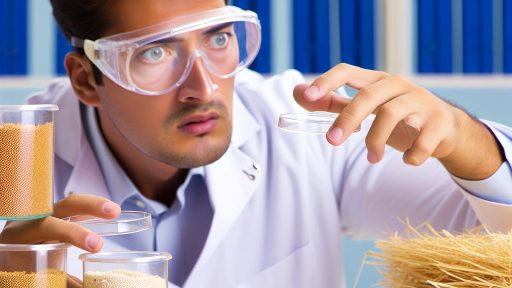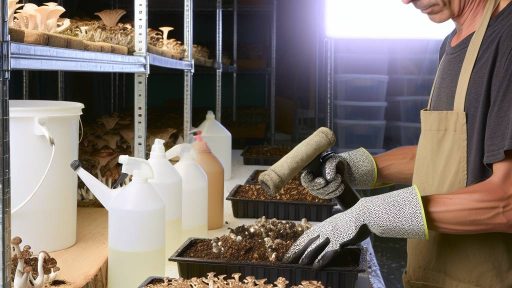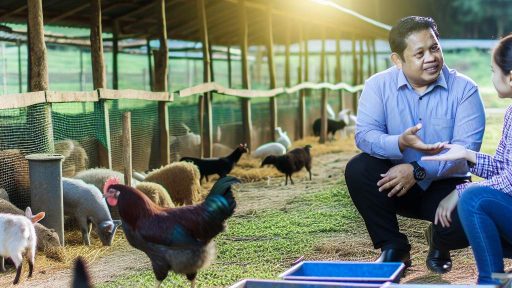Introduction to Lighting Needs for Indoor Urban Gardens
Lighting plays a crucial role in the success of indoor urban gardens.
Plants rely on light for photosynthesis and healthy growth.
In urban environments, natural light is often insufficient.
Thus, gardeners must consider additional lighting solutions.
Understanding the Importance of Light
Light influences plant health and growth rates significantly.
Different plants have varying light requirements.
For example, leafy greens prefer lower light levels.
Conversely, fruiting plants often thrive in bright light.
Understanding these needs guides the selection of lighting types.
Types of Lighting Options
Several light sources are suitable for urban gardens.
LED lights are energy-efficient and long-lasting.
They emit little heat, which prevents plant stress.
Fluorescent lights are another popular option.
These lights provide sufficient light while being affordable.
Incandescent bulbs, while less efficient, can be useful for specific settings.
Transform Your Agribusiness
Unlock your farm's potential with expert advice tailored to your needs. Get actionable steps that drive real results.
Get StartedDetermining Light Duration
Light duration impacts plant development and flowering cycles.
Most plants need 12 to 16 hours of light daily.
Using timers can help maintain consistent light exposure.
Moreover, it is essential to monitor plant responses to light conditions.
Optimizing Light Placement
Proper light placement enhances the effectiveness of indoor gardens.
Position lights directly above plants for maximum absorption.
Adjust the height of lights as plants grow taller.
Additionally, consider using reflective surfaces to maximize light distribution.
Monitoring Light Conditions
Regularly assessing light intensity is vital for plant health.
Light meters can help gauge the effectiveness of your lighting setup.
Adjustments may be necessary based on seasonal changes.
Keeping a close watch on plant health can indicate lighting issues.
Types of Grow Lights
Introduction to Indoor Gardening Lighting
Selecting the right grow light is essential for indoor urban gardens.
Each type of grow light has unique advantages and limitations.
Understanding these differences helps in making informed decisions.
LED Grow Lights
LED grow lights are energy-efficient options for urban gardeners.
They produce less heat compared to traditional lights.
This minimizes the risk of overheating plants.
LED lights come in various spectrums to support plant growth.
They can be tailored for specific phases of plant development.
Although they have a higher initial cost, they last longer.
Many gardeners appreciate their low energy consumption.
Benefits of LED Grow Lights
- Long lifespan, often exceeding 50,000 hours.
- Lower electricity costs over time.
- Variety in color spectrums for customized growth.
Limitations of LED Grow Lights
- Higher upfront investment compared to other options.
- May require multiple fixtures for large areas.
Fluorescent Grow Lights
Fluorescent lights are popular among beginners and small growers.
They are cost-effective and easy to use.
Showcase Your Farming Business
Publish your professional farming services profile on our blog for a one-time fee of $200 and reach a dedicated audience of farmers and agribusiness owners.
Publish Your ProfileThese lights emit less heat, reducing the risk of burning plants.
Fluorescent lights are available in various sizes and shapes.
T5 fluorescent lights are particularly effective for seedlings.
Advantages of Fluorescent Grow Lights
- Affordability makes them accessible to many gardeners.
- Lower heat output allows for closer placement to plants.
- Great for starting seeds and growing microgreens.
Disadvantages of Fluorescent Grow Lights
- Shorter lifespan compared to LED lights.
- Lower light intensity may limit growth for some plants.
HPS Grow Lights
High Pressure Sodium (HPS) lights are powerful options for seasoned growers.
They produce a high intensity of light, ideal for flowering stages.
HPS lights have a distinct yellow-orange spectrum.
This spectrum encourages robust flower and fruit development.
However, they generate substantial heat, necessitating proper ventilation.
Pros of HPS Grow Lights
- Excellent light output suitable for flowering plants.
- Relatively inexpensive for the power they provide.
- Widely used in commercial growing setups.
Cons of HPS Grow Lights
- High energy consumption leads to increased electricity costs.
- Heat management is crucial to prevent plant stress.
Choosing the Right Grow Light
Your choice of grow light depends on several factors.
Consider your budget, space, and types of plants you wish to grow.
Evaluate the specific needs of your urban garden before deciding.
Ultimately, the right light promotes healthy plant growth.
Understanding Light Spectrum: Photosynthetically Active Radiation (PAR)
Introduction to Light Spectrum
Light is essential for plant growth, particularly in indoor urban gardens.
Understanding the light spectrum helps gardeners provide the right conditions for plants.
Photosynthetically Active Radiation (PAR) is critical for photosynthesis.
What is PAR?
PAR consists of light wavelengths between 400 and 700 nanometers.
This range directly influences plant growth and development.
Plants utilize this spectrum for photosynthetic processes.
Importance of PAR in Indoor Gardening
Indoor gardens often lack sufficient natural light for optimal growth.
Artificial lighting solutions must then mimic natural light conditions.
Utilizing the right spectrum increases plant health and yield.
Types of Light Sources
- LED lights are energy-efficient and can be tailored for specific light spectrums.
- Fluorescent lights offer a broad spectrum suitable for all growth stages.
- High-Intensity Discharge (HID) lights provide intense light and heat for larger setups.
Choosing the Right Light for Your Urban Garden
Consider the types of plants you are growing.
Different plants have unique light requirements for optimal health.
Assess your space and whether you have room for larger setup lights.
Finally, evaluate the energy consumption of your chosen lights.
Find Out More: Organic Composting Methods for Rich Soil
Optimal Light Duration and Intensity for Different Plants
Understanding Plant Light Needs
Plants require different light durations for optimal growth.
Some thrive in low light, while others need bright, direct sunlight.
Understanding these differences helps you choose the right plants for your space.
Light Duration Guidelines
Several plants demand specific light durations each day.
- Leafy greens, like lettuce, often need 12-14 hours of light.
- Fruit-bearing plants, such as tomatoes, thrive with 14-16 hours of light.
- Herbs like basil do best with around 12 hours of light.
Adjust the light duration based on the plant’s growth stage too.
Seedlings generally need more light than mature plants.
Light Intensity Considerations
The light intensity impacts plant health and growth rates significantly.
Plants like succulents need high light intensity to thrive.
In contrast, shade-loving plants prefer lower intensities.
- Low-light plants include ferns and snake plants.
- Medium-light plants include peace lilies and spider plants.
- High-light plants include cacti and most herbs.
Monitor your plants to adjust light intensity as needed.
Using Artificial Lighting
Artificial lighting provides flexibility in urban gardening.
LED grow lights are energy-efficient and effective for all plant types.
Fluorescent lights work well for seedlings and maintenance of leafy greens.
Ensure the light spectrum supports plant growth by balancing red and blue wavelengths.
Showcase Your Farming Business
Publish your professional farming services profile on our blog for a one-time fee of $200 and reach a dedicated audience of farmers and agribusiness owners.
Publish Your ProfileSeasonal Light Adjustments
Seasons affect natural light availability indoors.
During winter months, indoor light may decrease significantly.
Consider increasing light duration or intensity during this season.
Utilizing timers can simplify managing light schedules.
Maximizing Indoor Plant Growth
Managing light duration and intensity enhances indoor gardening success.
Understand your plants’ unique needs for optimal growth.
Experiment with different lighting solutions to find the best fit.
Keep adjusting based on plant responses and seasonal changes.
Delve into the Subject: Organic Practices for Heritage Gardening Success
Light Placement and Layout Strategies for Efficient Space Utilization
Understanding Light Requirements
Plants require specific light wavelengths for optimal growth.
Understanding these needs is crucial when planning indoor gardens.
Different species of plants thrive under varying light conditions.
Research the types of plants you want to grow.
Choosing the Right Light Sources
Select artificial lights that mimic natural sunlight.
LED lights are popular due to their energy efficiency.
Fluorescent lights also serve as a great option for many plants.
Incorporate a mix of lights for varied light spectra.
Strategic Light Placement
Proper light placement maximizes space in urban gardens.
Consider hanging lights to allow plant growth beneath.
Mount lights at different heights for versatility.
Focus on areas that receive the least natural light.
Effective Layout Design
A well-planned layout enhances light distribution.
Group plants with similar light requirements together.
This method ensures even light exposure for all plants.
Utilize vertical space with shelves or racks.
Automation for Consistent Lighting
Use timers to maintain a regular light schedule.
This approach prevents plants from experiencing stress.
Automated systems provide consistent light exposure.
Consider smart systems that can adjust to plant needs.
Monitoring and Adjusting Light Conditions
Regularly monitor light levels to ensure plant health.
Adjust positioning as plants grow and light requirements change.
Be flexible with your lighting strategy for optimal results.
Take into account seasonal changes that affect natural light.
Find Out More: Watering Techniques For City-Based Farms
Energy Efficiency Considerations in Choosing Indoor Lighting
Understanding Energy Sources
Before selecting lighting, understand the different energy sources available.
Most indoor gardens rely on electric lighting systems.
However, consider the environmental impact of your energy choices.
Types of Indoor Lighting
Various types of indoor lighting are suitable for urban gardens.
- LED lights are highly recommended for their efficiency.
- CFLs offer moderate energy savings compared to traditional bulbs.
- Incandescent bulbs, while familiar, are less efficient overall.
Evaluating Energy Efficiency Ratings
Focus on evaluating energy efficiency ratings for lighting options.
Look for lights with high lumens per watt ratios.
Showcase Your Farming Business
Publish your professional farming services profile on our blog for a one-time fee of $200 and reach a dedicated audience of farmers and agribusiness owners.
Publish Your ProfileThis metric indicates better light output with less energy use.
Integrating Smart Technology
Incorporating smart technology enhances energy efficiency.
Smart lighting systems allow for better control of light intensity.
Utilize timers and sensors to reduce energy waste effectively.
Considering Plant Needs
Different plants require varying levels of light intensity.
Choose lighting that meets specific plant requirements.
This approach minimizes energy usage while maximizing growth potential.
Budget Considerations
Factor in both initial costs and long-term savings when choosing lights.
LED lights often have a higher upfront cost but lower energy bills.
Calculate the total cost of ownership to make informed decisions.
Find Out More: Harvesting Tips For Urban Farming Success

Impact of Lighting on Plant Growth
Germination Phase
Lighting significantly influences seed germination.
Seeds require specific light conditions to sprout effectively.
Bright, natural light can enhance germination rates significantly.
Conversely, inadequate light may slow down or prevent sprouting.
Utilizing grow lights can mimic the sun’s nurturing effects.
For example, LED lights are energy-efficient and effective.
They provide the right spectrum for optimal seed growth.
Seedling Development
Once germinated, seedlings depend heavily on consistent lighting.
Proper light encourages healthy growth and strong stems.
Inadequate lighting can lead to leggy seedlings with weak structures.
Regular light exposure helps seedlings develop robust leaves.
Additionally, using a timer ensures seedlings receive consistent light.
This practice fosters uniform growth and vitality.
Vegetative Growth Stage
During vegetative growth, plants require more intense lighting.
This stage thrives under long-duration light exposure.
Typically, 14 to 18 hours of light promotes healthy plants.
Different plant species have varying light needs during this phase.
Understanding these needs enhances growth rates significantly.
High-intensity discharge (HID) lights are popular choices as well.
They provide substantial brightness for thriving indoor gardens.
Flowering and Fruiting Phase
Light quality and duration shift during flowering stages.
Plants may need less light overall but higher intensity.
Switching to a different light spectrum can initiate flowering.
For instance, red light signals many plants to flower.
This change is crucial for fruiting plant varieties.
Monitoring light closely aids in maximizing yields.
Harvest Considerations
Light impacts the final quality of harvested produce.
Consistent lighting through all growth phases enhances flavor.
It also boosts nutritional content in many crops.
Showcase Your Farming Business
Publish your professional farming services profile on our blog for a one-time fee of $200 and reach a dedicated audience of farmers and agribusiness owners.
Publish Your ProfileInvesting in quality lighting systems pays off at harvest.
Additionally, proper light can prolong the fruiting season.
Hence, effective lighting solutions pay dividends in urban gardening.
Innovative Lighting Technologies
Smart Systems and Automation
Modern urban gardening benefits greatly from advanced lighting technologies.
Smart lighting systems provide customizable solutions for indoor plants.
Automation integrates various functions to simplify plant care.
For instance, programmable timers allow for specific light exposure times.
This technology helps simulate natural sunlight patterns.
Many systems feature sensors that adjust light levels based on plant needs.
Consequently, plants receive the optimal spectrum of light for growth.
Types of Smart Lighting Solutions
LED grow lights are among the most popular choices.
They consume less energy while providing targeted light wavelengths.
Moreover, these lights generate minimal heat, reducing burn risks for plants.
Another option is the use of full-spectrum lights.
These lights mimic natural sunlight, supporting all stages of plant growth.
Smart bulbs can also offer flexible lighting options for various plants.
They often connect to smart home systems for seamless integration.
Benefits of Automation in Urban Gardening
Automation simplifies maintenance tasks for urban gardeners.
This technology allows for precise watering and nutrient delivery.
Automated systems can detect moisture levels in the soil.
This ensures that plants receive adequate hydration without overwatering.
In addition, automated lighting schedules enhance plant growth consistency.
Gardeners also gain the flexibility to manage their plants remotely.
Through mobile apps, users can monitor and adjust settings on-the-go.
Future Trends in Urban Garden Lighting
The future of urban gardening lighting is promising and innovative.
Emerging technologies include smart sensors and AI-driven systems.
These advancements will facilitate real-time monitoring of plant health.
Furthermore, research continues into energy-efficient lighting options.
Such innovations will further reduce energy consumption and costs.
Ultimately, these developments will enhance the sustainability of urban gardens.
Common Mistakes to Avoid When Setting Up Indoor Garden Lighting
Neglecting Light Requirements
Every plant has specific light needs for optimal growth.
Neglecting these requirements can stunt your plants’ development.
Research the light preferences for each plant variety.
For instance, succulents often prefer bright light.
Conversely, ferns typically thrive in lower light conditions.
Overusing Artificial Lighting
Some gardeners mistakenly think more light is always better.
This can lead to light burn or stress for your plants.
Limit exposure to strong artificial lights to prevent damage.
Monitor your plants for signs of distress regularly.
Poor Placement of Lights
Strategic placement of lights is crucial for plant health.
Showcase Your Farming Business
Publish your professional farming services profile on our blog for a one-time fee of $200 and reach a dedicated audience of farmers and agribusiness owners.
Publish Your ProfilePlacing lights too close can cause overheating.
On the other hand, too far can hinder plant growth.
Use adjustable fixtures to optimize light distribution.
Ignoring Light Cycles
Plants require a specific light cycle to flourish.
Ignoring this can disrupt their natural rhythms.
Most plants need around 12 to 16 hours of light daily.
Consider using timers to maintain consistent light cycles.
Choosing the Wrong Light Type
The choice of light type significantly impacts plant growth.
Fluorescent lights are effective but not always ideal for all plants.
LED lights provide energy efficiency and longer lifespan.
Ensure you research the best options for your indoor garden.
Underestimating Heat Production
Some lighting systems produce more heat than you might expect.
This can lead to overheating and stress for your plants.
Use heat-resistant materials in your lighting setup.
Furthermore, monitor ambient temperatures regularly.
Neglecting to Adjust for Plant Growth
As plants grow, their light requirements may change.
Failure to adjust lighting can hinder their development.
Regularly assess your plants as they mature.
Shift the lights or adjust their intensity as needed.
Overlooking Spectral Needs
Plants use different light spectra for various growth stages.
Flowering stages often require more red light.
Vegetative stages benefit from more blue light.
Understand these needs to provide the best light spectrum.
Future Trends in Indoor Gardening Lighting Solutions
Advancements in LED Technology
LED technology continues to revolutionize indoor gardening.
These lights become more efficient and cost-effective each year.
Additionally, advanced LEDs provide the full light spectrum.
This versatility promotes healthier plant growth.
Furthermore, smart LED systems enable automated adjustments.
Sustainable Energy Sources
Using renewable energy sources for lighting is gaining traction.
Solar panels integrate seamlessly with indoor gardening systems.
These options reduce the carbon footprint significantly.
Moreover, governments often provide incentives for such solutions.
This makes sustainable options both eco-friendly and economically viable.
Smart Lighting Solutions
Smart technology is rapidly infiltrating indoor gardening.
Smart lights respond to both environmental conditions and plant needs.
They can adjust automatically based on time of day.
Furthermore, users can control them via mobile apps.
This flexibility enhances the indoor gardening experience.
Integration with Home Automation Systems
Indoor gardening lights increasingly integrate with smart home systems.
This provides seamless control over gardening environments.
Showcase Your Farming Business
Publish your professional farming services profile on our blog for a one-time fee of $200 and reach a dedicated audience of farmers and agribusiness owners.
Publish Your ProfileAdditionally, synchronization with other devices enhances efficiency.
Homeowners can create customized lighting schedules.
This ensures plants receive optimal light throughout their growth cycles.
Focus on Aesthetics and Design
Design plays a crucial role in lighting solutions for indoor gardens.
Trendy designs complement modern home decor effectively.
Moreover, stylish lights encourage more people to embrace indoor gardening.
Several companies offer customizable lighting options.
This allows users to blend functionality with aesthetic appeal.
Additional Resources
Small-scale hydroponics | UMN Extension
USDA Invests $7.4 Million in 25 Urban Agriculture and Innovative …




